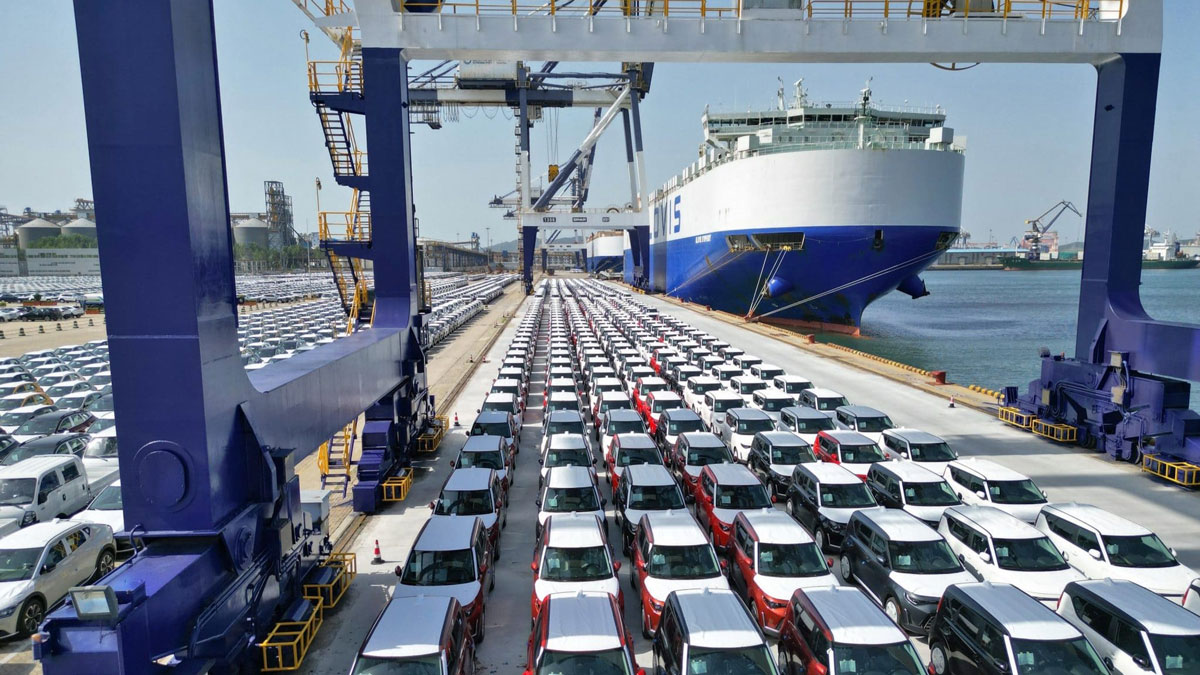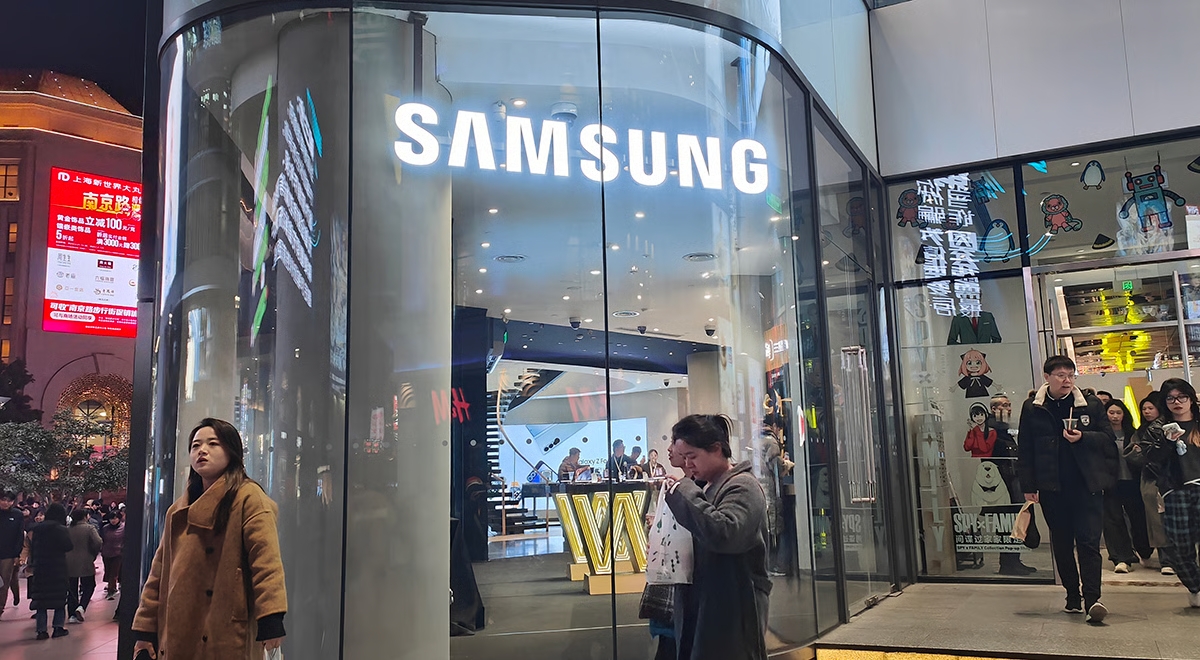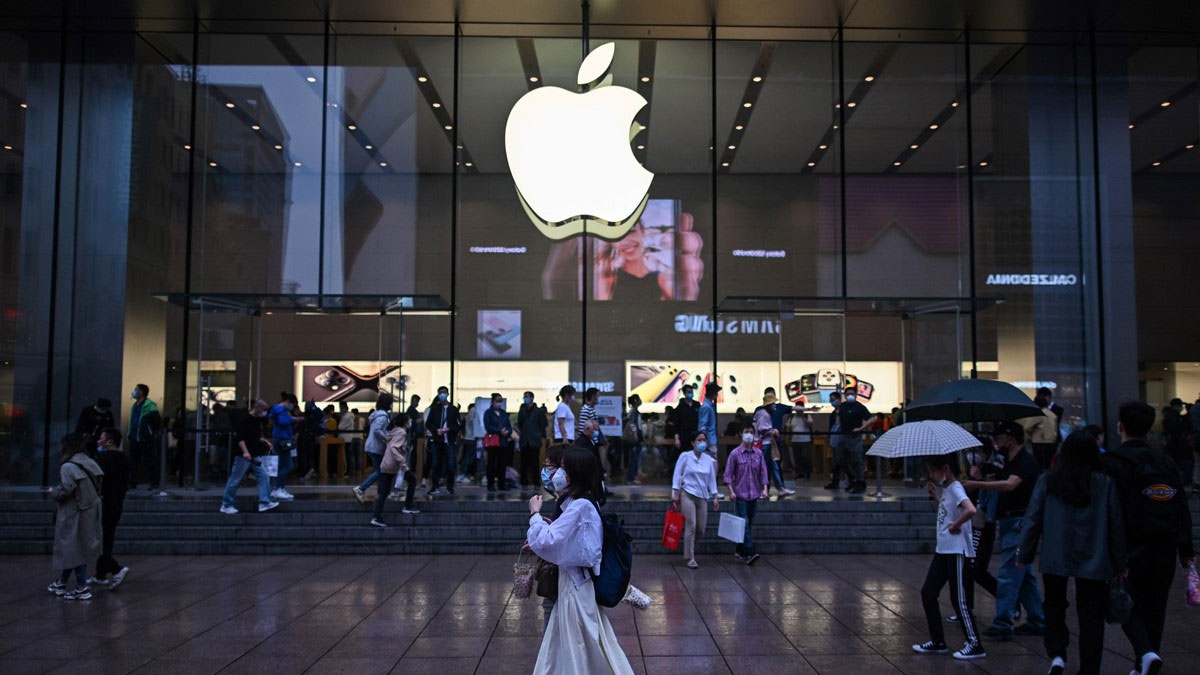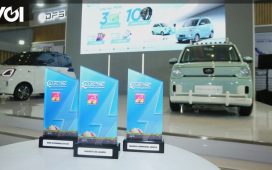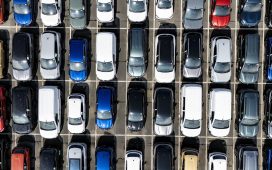An Industry Transformed1
Once small and backward, China’s auto industry became the world’s largest in 2009 and never looked back. In 2024, China produced more autos than the next four leading countries combined. The policy of allowing the entry of foreign companies through forced joint ventures with local producers started in the 1980s and extremely high tariff and non-tariff barriers helped power this growth. China’s auto production went from around 500,000 units annually in the early 1990s to 2 million in 2000, 5 million in 2005, 13 million in 2010, and 31 million in 2024.2
Sino-foreign JVs accounted for 85%-90% of the market in the early 1990s and 64% as late as 2020 before falling to 35% in 2024 and 31% in the first two months of 2025.3 This fall coincided with the growth of electrical vehicles (EVs), nearly all Chinese-made, from 6% of the market in 2020 to 47% in 2024 and 45% in the first two months of 2025,4 spurred by government support, discriminatory subsidies, and slower EV development by foreign companies. Recent developments have led analysts to question the future of companies like Volkswagen (VW), General Motors (GM), and Tesla in China.
Volkswagen
Volkswagen entered China through joint ventures with Shanghai Automotive Industry Company (SAIC) in 1984 (SVW) and First Automotive Works (FAW) in 1991 (FAW-VW). VW opened a third joint venture with JAC Motors (JAC-VW) to meet China’s EV mandates in 2017. VW supplied models considered outdated in the West in the 1980s and 1990s, shifted to models current elsewhere in the 2000s, and is now introducing models specifically designed in China for the China market.
VW unit sales in China were around 100,000 in 1990, 1 million in 2003, peaked at 4.2 million in 2018, and fell to 2.9 million in 2024. VW brands accounted for over 50% of the China market in the 1990s, 37% in 2003, 15% in 2023, and 12% in 2024, the first year it lost its position as market share leader since its entry. Its operating profit in China reached €5.2 billion (US$5.9 billion) in 2015, €4.7 billion (US$5.4 billion) in 2017, but only €2.6 billion (US$3 billion) in 2023 and €1.7 billion (US$1.9 billion) in 2024. China represented 40% of VW Group’s global auto sales and 25% of operating profits in 2017 but only a third of auto sales and 8% of operating profit in 2024.5
VW’s relative decline in China is linked to the shift to EVs. Industry analysts say that VW has not been able to keep pace with Chinese EV producers,6 while VW executives point out that subsidies and local bank financing allowed Chinese EV producers to sell at prices far below the cost of production, a game VW is apparently not willing to play.7 The fall in China profits has caused a global reassessment for VW. By 2024, VW was planning to close German factories for the first time in its history.8
In China, VW has undertaken a €15 billion (US$17 billion) electrification plan, an “in China for China” development strategy, and the purchase of a 5% stake in Chinese EV company XPeng for US$700 million.9VW plans to introduce 11 new EV models in China in 2025 and up to 40 from 2025 to 2027.10 Analysts say that VW’s success will depend on its ability to introduce AI and advanced driver assistance systems (ADAS) and become a leader in connected smart vehicles in China.11 However, the first quarter of 2025 saw a 7% drop in VW sales, including a 37% fall in EV sales.12 In addition, VW’s exports of EVs from China to Europe have been hindered by the European Union’s 20.7% tariff on VW EVs from China over and above the usual 10% duties.13
General Motors
General Motors entered China with joint ventures with SAIC in 1997 (SAIC-GM) and with SAIC and Wuling Automobile Company in 2002 (SGMW). SAIC-GM produces GM’s major brands, while SGMW produces mini and affordable vehicles.
GM’s JVs sold approximately 20,000 vehicles in China in 1999, 500,000 in 2004, 3.5 million in 2014, 4 million in 2017, but only 1.8 million in 2024 (including 1.3 million locally branded SGMW vehicles). The GM JVs’ China market share reached 10% in 2004 and 14% in 2017, before falling to 9.8% in 2022 and 6.9% in 2024. China accounted for 42% of GM’s global unit sales in 2017 and 31% in 2024. The decline in China unit sales equaled 61% of the decline in GM’s global unit sales in the period. GM posted China profits of over US$2 billion per year in the mid-2010s and US$446 million in 2023, but a loss of US$4.4 billion in 2024 on write-downs involving plant closings and impairments.14
Analysts have suggested write-downs could reach 88% of the prior value of GM’s China operations15 and some have predicted the company might exit the China market.16 GM itself expects to return to profitability in China in 2025 and its current China strategy includes plant closures, reduced inventories, and optimizing its EV lineup.17 GM notes its China EV sales were 50% higher in 2024 than 2023. SGMW’s EV sales in the first quarter of 2025 were 71% higher than in the first quarter of 2024 while SAIC-GM sales continued to slide,18 suggesting GM’s future in China will depend more on locally-branded SGMW than GM-branded SAIC-GM. US-China trade wars are not expected to have a major impact on GM’s China operations as its trade of autos in both directions has been minimal. The EU imposed 35.3% tariffs (over and above the usual 10% duty) on SAIC-GM and SGMW imports of EVs from China in 2024 as a precautionary measure, as the two companies had not been exporting EVs to the EU.19
Tesla
Tesla began importing autos into China in 2013. It opened its Shanghai Gigafactory in 2019 as the first 100% foreign-owned auto factory in China since the 1940s and opened a second plant in 2024. In 2021, Bloomberg claimed, “Again and again, it [Tesla] has extracted perks other international companies have struggled to obtain, including tax breaks, cheap loans, permission to wholly own its domestic operations, and assistance constructing a vast facility at astonishing speed.”20 In return, Tesla has built world-class facilities, localized sourcing, and exported a substantial portion of its Chinese production, providing a huge boost to the Chinese EV supply chain and EV industry.21
Tesla sold 137,000 vehicles in China in 2020, 440,000 in 2022, 658,000 in 2024, and 175,000 in Q1 2025. It exported 344,000 vehicles from China in 2023 and 260,000 in 2024. In 2024, Tesla was the 10th-largest seller of autos in China with a 3% market share and the fourth-largest seller of EVs, with an EV market share of 6% (BYD’s was 34%). China represented 37% of Tesla’s unit sales and 51% of its production in 2024.22 Although Tesla does not break out profits by region, analysts estimated that China accounted for half of Tesla’s profits in 2022,23 with sales in China accounting for 25%-30% and exports from China the remainder. That would suggest China-related profits (China sales and exports) of around US$7.5 billion in 2023 and US$3.5 billion in 2024.24 However, some estimates claim price cuts may have wiped out the operating profits of Tesla’s 2024 China sales.25
Tesla has been credited with tailoring the autos it sells in China to local taste, including in-car streaming and digital services. Tesla registered record sales in China in 2024 but remained well behind the leading Chinese companies in market share. It discounted and provided attractive financing options to attract customers in both 2023 and 2024. Tesla’s share of China EV sales fell to 4.1% in the first two months of 2025,26 as buyers waited for the introduction of the company’s new models but bounced back to 7.5% after the new models were introduced in March.27 Tesla’s China-made exports to Europe have been hit by EU tariffs on China-produced EVs, though the 7.8% tariff on Teslas (over and above the usual 10% duty) was lower than on other vehicles.28 Tesla stopped China orders for the US-sourced Models S and X in the midst of the tariff wars in April 2025. The impact was expected to be minor as the imports represented a very small portion of its China sales.29
Facing the Future
Foreign firms like VW and GM helped build China’s auto industry and for years China represented their largest and most profitable market. As late as 2020, after Tesla’s entry, foreign brands accounted for 64% of the China market. By the first quarter of 2025, this share had fallen to 31%, as EVs have come to account for nearly half the Chinese market. At the same time, profitability in the China market collapsed due to aggressive price competition and direct and indirect state subsidies to Chinese companies. Declining sales and profits have had an important impact on foreign companies used to China providing substantial portions of global profits.
According to the Center for Strategic and International Studies, Chinese government support for EVs totaled US$231 billion from 2009 to 2023. The output capacity of Chinese EV producers, numbering more than 200, vastly outstrips Chinese demand, resulting in price wars, an industry in which few Chinese companies are profitable, and pressure to export. Chinese companies have also invested heavily in R&D, producing high-quality autos, and have become far more effective global competitors. Fears that Chinese EVs will flood global markets caused the US to impose 100% tariffs on imports of Chinese EVs and 25% on EV batteries under the Biden administration (subsequently raised as part of the Trump administration’s tariffs) and the EU to impose tariffs of 7.8% to 35.3% (over and above the usual 10% duty) on Chinese-made EVs in 2024.30
The foreign auto firms have realized their position in China has deteriorated. China will no longer be the cash cow for them that it once was. Chinese companies will become even more capable, the advantages of foreign firms in internal combustion engines do not apply in EVs, and developing products at home and transferring them to China is a thing of the past. Their responses have included downsizing obsolete capacity, accelerating in-China-for-China development, introducing new EV models tailored to the local market, aggressive price cuts, partnering with Chinese EV companies, and using China as an export base for EVs.
They appear to have realized that China, not their home country, must be the touchstone for the China market and perhaps the global market. It remains to be seen whether these foreign firms have responded quickly enough to recapture lost ground in China and to forestall losses elsewhere. This will depend on whether they are successful in implementing their strategies, whether trade tensions result in backlash against foreign firms in China, whether China’s government and banks continue to prop up money-losing Chinese firms, and whether foreign governments choose to block potentially destabilizing exports from China. A report by the Rhodium Group, for example, showed that half the world’s markets have restricted imports of EVs from China.31 It is yet to be seen if such moves will allow the foreign firms time to catch up and whether Chinese firms will invest overseas as Japanese firms did starting in the 1980s. In any case, competition among companies and among governments is likely to shape this critical industry for decades.
***
[1] For a discussion of the history of the Chinese auto industry, see Michael Enright, “China’s Auto Policies: Playing the Long Game,” Hinrich Foundation, April 8, 2025, https://www.hinrichfoundation.com/research/article/fdi/china-auto-policies-playing-the-long-game/.
[2] Sales and market share figures are from the archives of the China Passenger Car Association (CPCA) and the China Association of Automobile Manufacturers (CAAM). While the data from these two sources tends to track, there are some differences in reported sales and output.
[3] CPCA and CAAM.
[4] Bill Russo, “State of China’s Auto Market – March 2025,” Automobility, March 18, 2025, https://automobility.io/2025/03/state-of-chinas-auto-market-march-2025/.
[5] Jordyn Dahl, “Volkswagen is the anti-Tesla and China is to blame,” Politico, September 16, 2024, https://www.politico.eu/article/volkswagen-tesla-china-evs-europe-herbert-diess-elon-musk/; Volkswagen, Annual Reports, Various Years, https://www.volkswagen-group.com/en/financial-reports-18134; Volkswagen does not consolidate the operating profit figures from China into the Group reports, percentages were calculated from China and Group results.
[6] William Clavey, “Volkswagen Group Is No Longer The Sales King In China,” Top Speed, January 21, 2025, https://www.topspeed.com/volkswagen-is-no-longer-the-sales-king-in-china/.
[7] Keith Bradsher, “How Volkswagen Lost Its Way in China,” The New York Times, November 10, 2024, https://www.nytimes.com/2024/10/31/business/volkswagen-china.html.
[8] Hanna Ziady, “Historic moment for Volkswagen: Automaker plans to close ‘at least’ 3 German plants and cut thousands of jobs,” CNN, October 28, 2024, https://www.cnn.com/2024/10/28/business/volkswagen-factory-closures-layoffs/index.html.
[9] Edward White and Patricia Nilsson, “Volkswagen fails to win ground in China,” Financial Times, January 9, 2024, https://www.ft.com/content/1386906c-5dd1-4167-bc96-72940fc473bf.
[10] Elijah Nicholson-Messmer, “Volkswagen’s Fight for Relevance in China: Can 11 New Models Turn the Tide?,” Auto Blog, March 21, 2025, https://www.autoblog.com/news/volkswagens-fight-for-relevance-in-china-can-11-new-models-turn-the-tide.
[11] “Volkswagen’s China Comeback Plan: Outpacing BYD,” Archyde, April 14, 2025, https://www.archyde.com/volkswagens-china-comeback-plan-outpacing-byd/.
[12] “Volkswagen’s EV sales rise in Europe, plunge in China,” Reuters, April 9, 2025, https://www.reuters.com/business/autos-transportation/volkswagens-europe-ev-sales-more-than-double-first-quarter-2025-04-08/.
[13] David McHugh and Ken Moritsugu, “What to know about Europe’s tariffs on Chinese electric vehicles,” Associated Press, October 30, 2024, https://www.yahoo.com/news/know-europes-tariffs-chinese-electric-074612065.html.
[14] General Motors Company, Annual Reports, Various Years, https://investor.gm.com/static-files/a3c085f6-0268-4b0d-9734-4db99402f6a7 ; https://investor.gm.com/sec-filings, GM includes sales of SGMW in its market share estimates. Excluding SGMW, in which GM has a minority ownership stake, reduces GM’s 2024 share to 2.6%.
[15] William Stopford, “General Motors takes multi-billion dollar hit as China troubles mount,” CarExpert, December 6, 2024, https://www.carexpert.com.au/car-news/general-motors-takes-multi-billion-dollar-hit-as-china-troubles-mount.
[16] Pras Subramanian, “GM China to take $5B hit; ‘there will be no comeback story,’ expert says,” Yahoo Finance, December 4, 2024, https://finance.yahoo.com/news/gm-china-to-take-5b-hit-there-will-be-no-comeback-story-expert-says-172748406.html.
[17] Jonathan Lopez, “GM Expects Return To Profitability In China In 2025,” GM Authority, February 5, 2025, https://gmauthority.com/blog/2025/02/gm-expects-return-to-profitability-in-china-in-2025/.
[18] General Motors’ China Q4 Sales Rise 41% Q/Q on Strong NEV Deliveries, Zacks Equity Research, January 10, 2025, https://finance.yahoo.com/news/general-motors-china-q4-sales-153800500.html?guccounter=1&guce_referrer=aHR0cHM6Ly9kdWNrZHVja2dvLmNvbS8&guce_referrer_sig=AQAAALMfstztnfpfKd4ZnY7wPuf4W9eABXn0dkU3HC8FcE0RAKjzcNhTpiZVOxrJOCq8AweGih2QMZhaWCQr14qsVL2_B7WaajpV7dhRbrbyOIlyEdwp51rxG0Z8yc17zv8qkpXvK3hK3gEk7HqYVzTAmKNrFRoSGjLgQqE8m4ppv4RC.
[19] Rhian Hunt, “EU Slaps Stiff Tariff On SAIC-GM and SAIC-GM-Wuling Chinese-Built EVs,” GM Authority, July 5, 2024, https://gmauthority.com/blog/2024/07/eu-slaps-stiff-tariff-on-saic-gm-and-saic-gm-wuling-chinese-built-evs/; European Commission, “EU imposes duties on unfairly subsidised electric vehicles from China while discussions on price undertakings continue,” EU Press Release, October 28, 2024, https://ec.europa.eu/commission/presscorner/detail/en/ip_24_5589.
[20] Matthew Campbell, with Chunying Zhang, Haze Fan, David Stringer, and Emma O’Brien, “Elon Musk Loves China, and China Loves Him Back—for Now,” Businessweek, January 13, 2021, https://www.bloomberg.com/news/features/2021-01-13/china-loves-elon-musk-and-tesla-tsla-how-long-will-that-last.
[21] Campbell et al.
[22] Bill Russo, “State of China’s Auto Market – January 2025,” Automobility, January 22, 2025, https://automobility.io/2025/01/state-of-chinas-auto-market-january-2025/; Simon Alvarez, “Tesla China wholesale units dip 44% in December, though Q4 is still a strong quarter overall,” Teslarati, January 5, 2023, https://www.teslarati.com/tesla-china-december-sales-record-q4-2022/; Simon Alvarez, “Tesla China sales soar in March amid new Model Y domestic deliveries,” Teslarati, April 9, 2025, https://www.teslarati.com/tesla-china-sales-march-new-model-y-domestic-deliveries/.
[23] John Engle, “Tesla’s China Growth Prospects Look Increasingly Shaky,” Seeking Alpha, November 30, 2022, https://seekingalpha.com/article/4561454-tesla-china-growth-prospects-look-increasingly-shaky.
[24] Rough estimates based on analyst reports and Tesla’s financial reports. See for example, Claribelle Deveza, “Tesla China May Have Over 30% Gross Margins, Says Morgan Stanley,” Tesmanian, October 1, 2024, https://www.tesmanian.com/blogs/tesmanian-blog/tesla-china-30-gross-margins-morgan-stanley?srsltid=AfmBOoqdTaHpBxl4PzVtQ-6xHVXGfl6eiC7enXWf-5FMXnl7vUnSeGvd#:~:text=Based%20on%20the%20report%2C%20Jonas,of%20the%20wages%20in%20California.
[25] “Tesla’s latest price cuts risk wiping out China earnings,” Business Times, April 22, 2024, https://www.businesstimes.com.sg/companies-markets/transport-logistics/tesla-s-latest-price-cuts-risk-wiping-out-china-earnings.
[26] Russo, March 2025.
[27] Dong Yi Chen, “Passenger vehicle retail sales ranking in China, BYD: 290000, Geely: 195000, FAW-Volkswagen: 130000, Tesla China: 74000, March 2025,” Car News China, April 12, 2025, https://carnewschina.com/2025/04/12/passenger-vehicle-retail-sales-ranking-in-china-byd-290000-geely-195000-faw-volkswagen-130000-tesla-china-74000-march-2025/.
[28] McHugh and Moritsugu.
[29] Simon Alvarez, “Tesla China discontinues Model S and Model X orders amid tariff war,” Teslarati, April 11, 2025, https://www.teslarati.com/tesla-china-discontinues-model-s-model-x-orders-tariff-war/.
[30] Scott Kennedy, “The Chinese EV Dilemma: Subsidized Yet Striking,” CSIS Blog, June 28, 2024, https://www.csis.org/blogs/trustee-china-hand/chinese-ev-dilemma-subsidized-yet-striking; European Commission, October 28, 2024.
[31] Elaine Kurtenbach, “EVs, tariffs in the spotlight as Chinese automakers take leading role at Shanghai auto show,” ABC News, April 22, 2025, https://abcnews.go.com/Business/wireStory/evs-tariffs-spotlight-chinese-automakers-leading-role-shanghai-121067719.
© The Hinrich Foundation. See our website Terms and conditions for our copyright and reprint policy. All statements of fact and the views, conclusions and recommendations expressed in this publication are the sole responsibility of the author(s).

